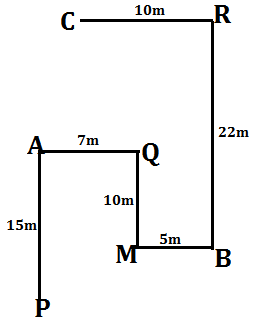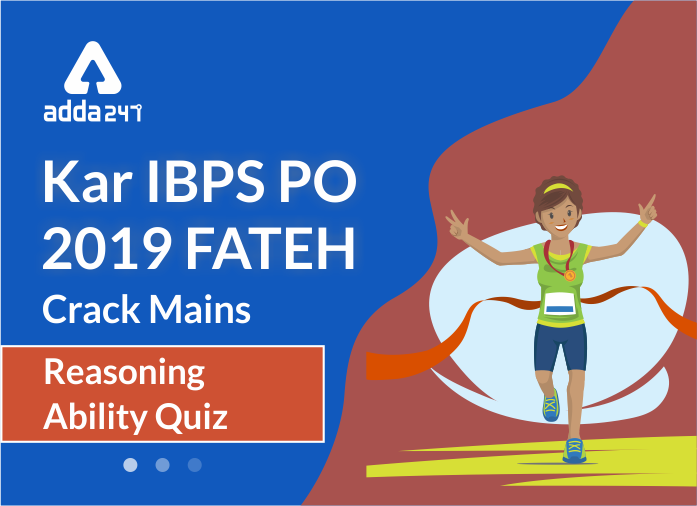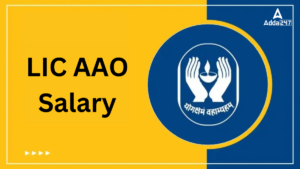Table of Contents
The reasoning being the scoring part can enhance your performance as a whole. All you need to do is clear your basics and be aware of the syllabus of the particular exam you are preparing for. Study Notes for the topics like Puzzles, Coding-decoding, sitting arrangement, blood relations, and the list is long is provided on Adda247, so that you can make the preparation time fun by cracking the logic that runs the engine of a particular topic. Giving mocks and Quizzes on a regular basis will help you to decode the strategy. Also, the Study Plans go hand in hand with the exam preparations that will take place in the upcoming months. We will also provide the study plan for PO Mains. Here we give the IBPS PO Reasoning Quiz of 16th November 2019 covers Miscellaneous Topic.
Directions (1-5): Study the following information carefully and answer the questions given below:
There are twelve persons namely A, B, C, D, E, F, G, H, I, J, K and L live on four different floors of a same building. Ground floor is number 1 and top floor is number 4. There are three flats on each floor- flat-1, flat-2 and flat-3 from west to east such that flat-1 of fourth floor is exactly above flat-1 of third floor which is exactly above flat-1 of second floor and Flat-1 of second floor is exactly above flat-1 of first floor and other flats are placed in the same way.
J lives in an even numbered flat. B lives on the fourth floor and B lives in an odd numbered flat. L lives in the flat which is just below to the flat of B. J does not live on the floor on which B and L lives. E lives in flat-3 but does not live on first floor. D lives in the flat which is just above G’s flat and they live in odd numbered flat. H lives on the same floor on which B lives. H lives in the flat which is just above A’s flat. G does not live on third floor. G and J do not live on the same floor. I lives on the first floor but does not live in a flat which is just below J’s flat. C does not live on first, second and third floor. A and E do not live in the flat which is just above D’s flat. F lives on the first floor. K does not live in the flat which is just below L’s flat. K does not live in flat-2 and also doesn’t live in flat-3 of third floor. C and E does not live on same flat number.
Q1. Who among the following lives on flat number-3 of the second floor?
(a) E
(b) A
(c) D
(d) G
(e) C
Q2. Who among the following lives immediate above J?
(a) H
(b) F
(c) A
(d) L
(e) K
Q3. Which of the following pair of persons live same floor with L?
(a) D-J
(b) F-I
(c) H-B
(d) K-A
(e) G-F
Q4. Which of the following is true about D?
(a) 1st floor- Flat 2
(b) 3rd floor- Flat 3
(c) 2nd floor- Flat 1
(d) 4th floor- Flat 3
(e) None is true
Q5. Who among the following lives on first floor?
(a) C
(b) L
(c) D
(d) K
(e) G
Directions (6-9): Study the given information and answer the questions:
When a number arrangement machine is given an input line of numbers, it arranges them following a particular rule. The following is an illustration of an input and its rearrangement.
Input: 75 67 42 38 92 56 87
Step I: 225 201 126 114 276 168 261
Step II: 20 2 18 8 54 56 8
Step III: 10 1 9 4 27 28 4
Step IV: 28 27 10 9 4 4 1
Step IV, is the last step of the above arrangement as the intended arrangement is obtained.
As per the rules followed in the given steps find out the appropriate steps for the given input:
Input: 47 69 52 64 93 86 72
Q6. What is the difference between the numbers which is third from the left in step III and the number which is fourth from the right in step IV?
(a) 5
(b) 8
(c) 10
(d) 15
(e) None of these
Q7. Which of the following number is third from right in step I?
(a) 192
(b) 258
(c) 216
(d) 279
(e) None of these
Q8. What is the sum of digits of the number which is fourth from the left in step II?
(a) 2
(b) 5
(c) 8
(d) 9
(e) 10
Q9. What is the resultant, If smallest number of Step II is multiply by second highest number of step III?
(a) 110
(b) 140
(c) 115
(d) 80
(e) 50
Q10. The economy grew by 4.7 per cent in the quarter ending December, which was slightly better than the average of 4.6 per cent during the first half of the year.
Which of the following assumptions is implicit in the above statement? (An assumption is something supposed or taken for granted.)
(a) Growth figures are released quarterly.
(b) Eight core industries grew by just 1.6%.
(c) There is an unexpected measure of uncertainty in the decision making.
(d) Export grew at a slower pace during the three months up to January.
(e) GDP growth will figure prominently in the General Elections.
Directions (11-13): Study the information carefully and answer the questions given below.
A person starts walking in north direction from point P, after walking 15m he reached at point A, then he takes right turn and walks 7m to reach at point Q. After that he walks in south direction and walks 10m to reach at point M. Point B is 5m east of point M. Point R is 22m north of B. Point C is 10m west of R.
Q11. What is the direction of R with respect to person’s initial position?
(a) North
(b) West
(c) South-West
(d) North-East
(e) None of these
Q12. What is the shortest distance between Q and R?
(a) 13m
(b) 25
(c) 20m
(d) 17m
(e) 22m
Q13. What is the direction of P with respect to B?
(a) South-East
(b) North-West
(c) South-West
(d) East
(e) None of these
Directions (14-15): In each of the following questions, two statements numbered I and II are given. There may be cause and effect relationship between the two statements. These two statements may be the effect of the same cause or independent cause. These statements may be independent cause without having any relationship. Read both the statements in each question and mark your answer as
(a) if statement I is the cause and statement II is its effect;
(b) if statement II is the cause and statement I is its effect;
(c) if both the statements I and II are independent causes;
(d) if both the statements I and II are effects of independent causes; and
(e) if both the statements I and II are-effects of some common cause.
Q14. I. India has surpassed the value of tea exports this year over all the earlier years due to an increase in demand for quality tea in the European market.
II. There is an increase in demand of coffee in the domestic market during the last two years.
Q15. I. There is increase in water level of all the water tanks supplying drinking water to the city during the last fortnight.
II. Most of the trains were cancelled last week due to water-logging on the tracks.
Solutions:-
Sol.(1-5):

S1. Ans.(a)
S2. Ans.(c)
S3. Ans.(d)
S4. Ans.(c)
S5. Ans.(e)
Sol. (6-9):
Sol. In this input output question only numbers is arranged in each step. Let us understand the logic behind it- In each step the numbers are arranged
Step 1: All the number(input) multiply by 3.
Step 2: First two digit of the number are added then multiply by third digit.
Step 3: All the numbers divided by 2.
Step 4: All number are arranged in descending order.
Input: 47 69 52 64 93 86 72
Step I: 141 207 156 192 279 258 216
Step II: 5 14 36 20 81 56 18
Step III: 2.5 7 18 10 40.5 28 9
Step IV: 40.5 28 18 10 9 7 2.5
S6. Ans.(b)
S7. Ans.(d)
S8. Ans.(a)
S9. Ans.(b)
S10. Ans.(a)
Sol. A quarter is the common denomination of the periods mentioned here
Sol.(11-13):

S11. Ans.(d)
S12. Ans.(a)
S13. Ans.(c)
S14.Ans. (c)
Sol. The two statements discuss two separate statistical and generalized results.
S15.Ans. (d)
IBPS PO Mains 2019 Preparation Study Material!
If you are preparing for IBPS Clerk Exam, then you can also check out a video for Reasoning below:
You may also like to Read:





 GA Capsule for SBI Clerk Mains 2025, Dow...
GA Capsule for SBI Clerk Mains 2025, Dow...
 The Hindu Review October 2022: Download ...
The Hindu Review October 2022: Download ...
 LIC AAO Salary 2025, Revised Structure, ...
LIC AAO Salary 2025, Revised Structure, ...





